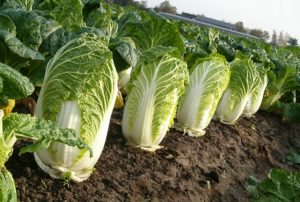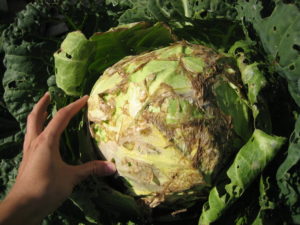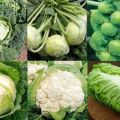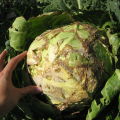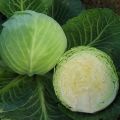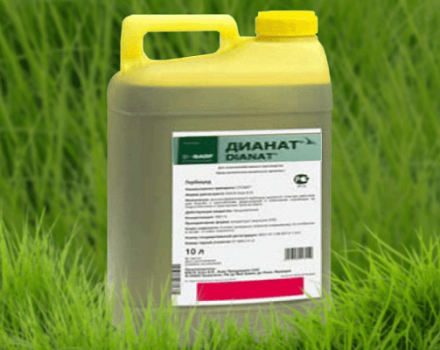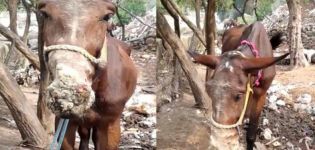Characteristics and description of the Rinda cabbage variety, properties
A modern vegetable grower is not limited in the choice of crop varieties that he wants to grow, the most important thing is that the species meets the requirements for yield, size and some other characteristics. Rinda cabbage is one of those varieties that many choose for its versatility and ease of growing. With the observance of the minimum rules of care, obtaining an excellent harvest is guaranteed by breeders.
Description of the variety
Among the huge variety of all varieties, it is Rinda that is the cabbage that is most often chosen by gardeners for growing in their summer cottages. This is due to the excellent taste of the vegetable, excellent yield, unpretentiousness to growing conditions.
Rinda is a hybrid that was bred in Holland by the agro-technical firm Monsanto in 1993. At the same time, the variety was included in the State Register of Russia. Cabbage is popular not only in Russia, but all over the world. Its remarkable characteristic is a reason for inclusion in the list of crops planted both in the country and in industrial volumes.
The variety belongs to the mid-season category, but has some unique properties. So, this is one of those varieties that can be used equally successfully both fresh and canned. An excellent result is obtained when using Rinda in food preparation (heat treatment). The heads of cabbage have a shelf life of several months.
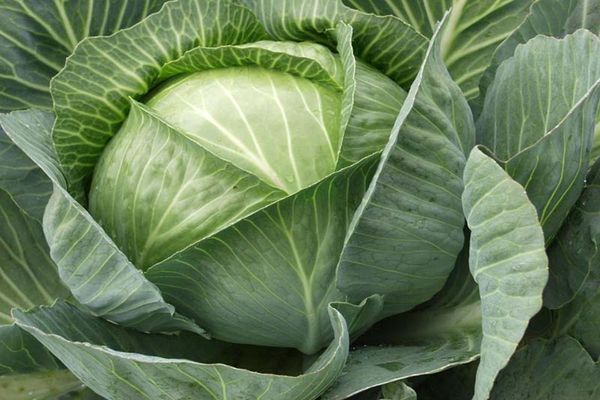
The description of the Rinda cabbage variety states that the species is considered mid-season and high-yielding. One square meter can "give" a gardener up to 14 kilograms of cabbage. Ripening occurs 125 days later (average) after sowing seeds for seedlings.
It takes about three months from disembarkation to consumption. Rinda's excellent cultivation results have been recorded in a wide variety of regions with different climatic conditions.
The cabbage rosette has a semi-raised shape, but the dimensions are quite compact. Thin elastic leaves are moderately spreading. Their color is light green. The density of cabbage heads is high, the shape is round. A distinctive feature of Rinda is the excellent preservation of the head of cabbage on the vine. The average weight of a head of cabbage is about 6 kilograms, but in some cases the weight can reach 8 or even 10 kilograms.
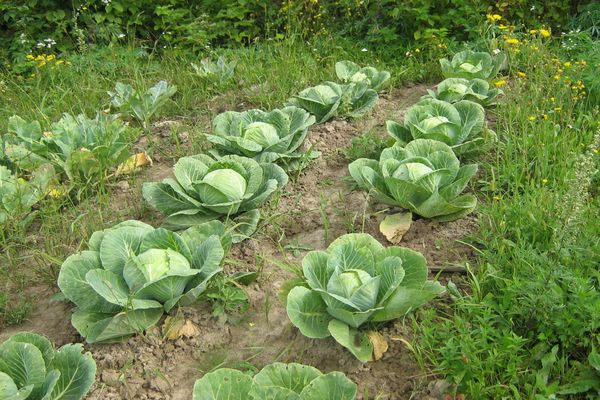
The internal structure of the head of Rinda cabbage is very beautiful. Thin elastic leaves permeate the veins. The taste is very delicate and juicy. Such a sheet is perfect for making salads and cabbage rolls.
Advantages and disadvantages
Rinda cabbage is a mid-season crop that has many advantages, but not without its disadvantages. Studying the variety description will help the grower make the right choice when planning plantings.Rinda's merits are as follows:
- high productivity;
- the possibility of growing on different types of soils;
- resistance to the manifestation of most diseases;
- excellent harvest in different climatic zones;
- excellent taste of leaves;
- good tolerance to temperature changes;
- no cracking;
- attractive appearance, which improves the commercial qualities;
- universality of use;
- the duration of the storage of heads of cabbage (up to six months);
- amicable ripening, which simplifies the collection process.
Culture is also not without its drawbacks. For productive cultivation, the summer resident must keep in mind that:
- Rinda is demanding on the amount of incoming moisture;
- cabbage has a poor tolerance for stagnant water;
- the vegetable has increased requirements for the level of illumination;
- when growing Rindu cabbage, it is necessary to ventilate the greenhouse area.

Taking into account all the peculiarities of the variety, it is possible to decide on the need to use the Rinda variety in the personal plot.
Growing features
Rinda F1 cabbage can be grown with ease in a variety of climates. Depending on the region, the time for sowing seeds for seedlings may be different. The start of the process should be in mid-March or at the end of the month.
Before planting, the seed is soaked for a few seconds in cold salt water, then the seed should be placed in a hot environment. It is preferable to use wooden boxes for seedlings, the soil should be prepared the day before.
The depth of the holes should be between 10 and 15 millimeters. The culture makes standard temperature requirements: the average should be around 22 ° C. After the sprouts appear, the temperature urgently needs to be lowered to 8 ° C.
Two weeks later, the seedlings are picked. This is necessary so that later you can safely transplant the culture into the soil or greenhouse. The seedlings should be watered abundantly. The seedlings are ready for planting on the "mainland" when they have 7 or 8 leaves. This will happen approximately 35 to 40 days after sowing the seed.
From the moment the plants are transferred to the ground, it will take about 90 days until the first head of cabbage ripens. Rinda's planting scheme is standard for cabbage: no more than 40 plant specimens should fall on 10 square meters. Excessive density will harm the plants, shade them, lead to a decrease in yield and a deterioration in the taste of fruits. The optimal planting pattern is 30 by 50 centimeters for one plant.
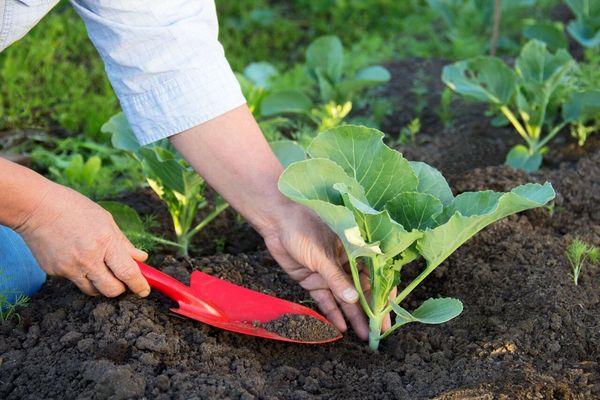
Good development of Rinda cabbage is possible when it is cared for correctly. To do this, it is necessary to water the plants in a timely manner, loosen and, if possible, mulch the soil, spud cabbage forks. It is necessary to organize protection from pests, which can be carried out using wood ash, tobacco dust, acetic acid solution.
To get strong and elastic heads of cabbage, you should regularly feed the plants. Several times during the season it is necessary to apply potash and phosphorus fertilizers, organic matter.
Rinda reacts very well to getting a portion of nitrogen. Combining top dressing with quality care, getting a good harvest will be easy and simple.
